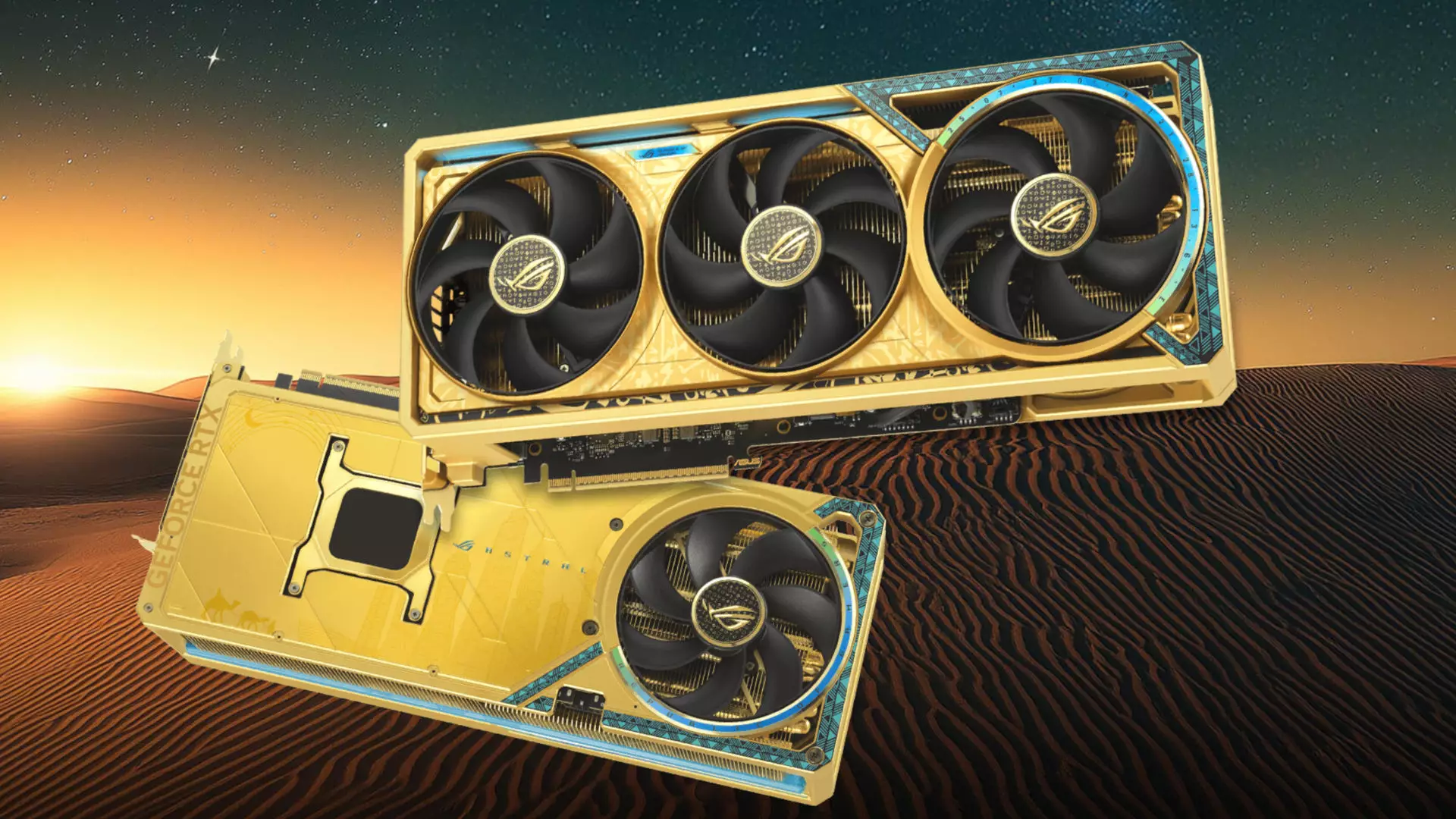In modern gaming, the cost of high-performance components has reached astronomical heights, yet the Asus ROG Astral GeForce RTX 5090 Dhahab Edition takes luxury to a level that hardly seems justifiable. With a staggering MSRP of $7,000, this graphics card not only eclipses Nvidia’s already eye-watering GeForce RTX 5090 Founders Edition, priced at $1,999 but also redefines the meaning of exclusivity. While inflated prices for tech components have become the norm, the Dhahab Edition stands out as a gargantuan leap into the realm of ostentation, shocking both enthusiasts and skeptics alike.
It’s essential to consider the value proposition of such an investment. What exactly does a $7,000 graphics card provide that could ever justify its expense? Most would argue that a price this high requires extraordinary features, but are the enhancements truly worth it, or is this merely a case of market opulence?
Unpacking the Features
So, what principles underpin this inflated price? At its core, the Asus ROG Astral GeForce RTX 5090 Dhahab Edition boasts a substantial overclock—setting it apart from its siblings. With a base clock of 2,580 MHz escalating to 2,680 MHz in overclock mode, the Dhahab edition carries a performance edge. However, this seemingly impressive statistic raises a question: Is a mere bump in clock speed worth an extra $3,640 over its non-golden counterpart? Performance metrics aside, the card’s cooling system is a notable upgrade—it features a four-fan system alongside a massive heatsink designed to absorb and dissipate heat efficiently.
Despite such technical improvements, we’re still left with whispers of a more fundamental issue lacking in this price point: the necessity versus luxury debate. Sure, the cooling system is impressive, but is it groundbreaking enough to validate this price? Many seasoned gamers would argue that the standard high-end models, generally far less pricey, would suffice while delivering comparable, if not equal, performance.
Gold-Plated Problems
Perhaps the most eye-catching aspect, quite literally, is the gold-plated exterior. At 6.5 grams of actual gold, the Dhahab Edition doesn’t shy away from flaunting its luxurious materials. Yet therein lies yet another paradox. The value of gold fluctuates in the market—currently, the worth of that gold amounts to around $670. Is a shiny exterior really worth the additional thousands when function is being compromised?
Furthermore, it raises a moral question. In an age where sustainability is of increasing importance, the placement of actual gold on a device that relies heavily on environmental resources might be seen as irresponsible. Instead of channeling such resources into grandiosity, manufacturers could focus on more meaningful innovations, possibly diverting their efforts to enhance other aspects like power efficiency and longevity of their products.
The Exclusivity Factor
With a limited release targeting exclusive markets, primarily in affluent regions of the Middle East, the Dhahab Edition seems part of an elaborate game of status rather than performance. The reality is that many buyers likely won’t even utilize this card for gaming; its mere ownership presents an opportunity to flaunt wealth and power in an intensely competitive society. Collectors and enthusiasts might find value in possessing something exceedingly rare, but at what cost—both monetarily and ethically?
It’s easy to forget that virtual experiences often come at a fraction of the price—why would individuals opt for a single component that could equate to an entire high-end gaming rig, complete with accessories and displays? The allure of the Dhahab Edition isn’t just about gaming; it’s a lifestyle statement.
A Rethinking of Priorities
As consumers, we find ourselves at a crossroads. Should we continue to reward companies for astronomical pricing strategies based on perceived value rather than tangible benefits? If you crave excellence in gaming, is it not wiser to invest in an entire gaming system featuring superior technology and performance?
In this instance, the opportunity cost is substantial. For the same expenditure as an Asus ROG Astral GeForce RTX 5090 Dhahab Edition, one could build an entire gaming setup that boasts an RTX 5090 and complements it with an impressive display and additional accessories. Furthermore, the notion of splurging on an item designed more for show than functionality begs for examination.
In an era where innovation should be rewarded, the Dhahab Edition stands as a symbol of excess. It’s the apex of what happens when companies prioritize luxury over practicality.

